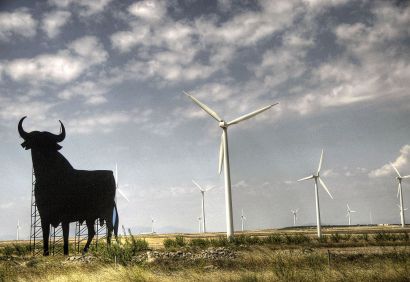A well-planned wind energy deployment across Europe that includes the Iberian Peninsula can facilitate the objective of a single decarbonized European electric market and the emission reduction targets for 2030 and 2050.
Last September has probably been the windiest month of the last 5 years. The use of wind turbines leaves unusual electricity generation figures in the EU and in Spain. On the one hand, in the EU + Norway, wind energy has gone from covering 10.9% in September last year to 12.5% ??in September this year.
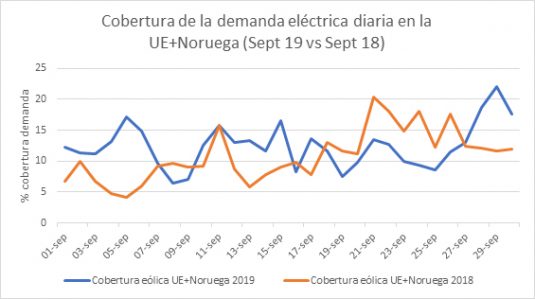
Source: WindEurope and ENTSOE, PREPA elaboration
This greater use of the wind energy resource in the EU has meant a significant reduction in CO2 emissions. With the 29.5 TWh generated by the wind farm plants in the month (enough to cover more than the Spanish monthly consumption of 21 TWh), the emission of at least 24.5 million tons of CO2 into the atmosphere has been avoided. In Spain, the emissions avoided by wind are 3.7 million tons of CO2.
Meanwhile, in Spain, thanks to the wind power, 18.4% of the electricity demand has been covered in the past month (in 2018, 12.2% was covered in the same month). Since 2012, not much electricity was produced in September thanks to wind power.
As you can see in the graph, it has been during the first fortnight of the month when electricity has been generated with the wind turbines well above what had been done in the last 5 years, reaching a new hourly record on September 10 .
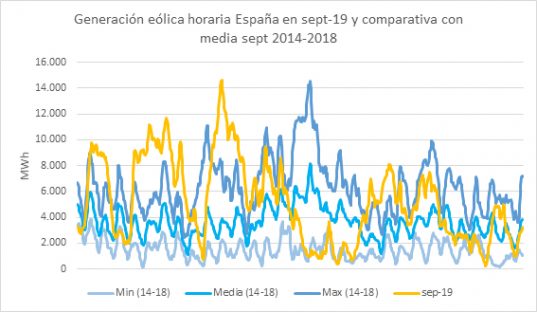
Source: REE and PREPA elaboration
Wind power has also contributed to reducing the price of European electricity markets. In Germany, with 23.8% wind demand coverage compared to 17.1% last year, the price of the electricity market has fallen by 35%; In the United Kingdom 38%, in France 43% and in Spain 34.5%.
The installation of wind power in Spain can be an important balancing factor for the emerging European single electricity market, since, as can be seen in the graph, the Spanish wind generation is usually not correlated with the German wind generation, of such that when there is wind on the peninsula, there may be no wind in northern Germany, and vice versa.
We must also consider the necessary interconnections with France and Portugal, since with our neighbor of the peninsula we also share the electricity market, and on the other hand the Pyrenees are the exit to the consumers of Central Europe, which values ??the renewable electricity of the peninsula . When interpreting the graph, it must be taken into account that in Germany there are 60 GW of wind while in Spain only 23.5 GW. The data for Germany on September 29 is striking, when 62% of wind coverage was reached.
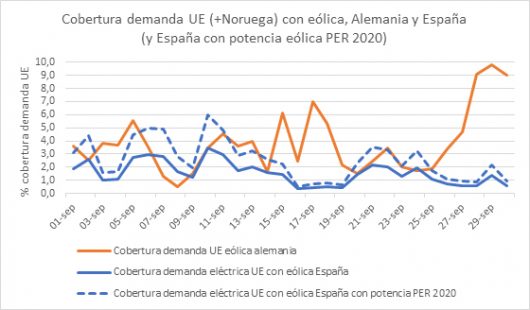
Source: Wind Europe, REE and PREPA elaboration
Spain has an important advantage over many European countries in terms of wind resources, since it also has different wind regimes. For example, as you can see in the graph, where the hourly wind turbines generation is compared in January 2018 in the provinces of A Coruña and Cádiz, the wind is not homogeneous throughout the peninsula, so when there is no wind in a part of the peninsula can be in another. Thanks to the geographical position and orography of our country, the development of wind power throughout the territory allows that in the Spanish electricity system in more than 95% of the hours of the year a contribution greater than 9% of the power is always guaranteed. Total wind installed.
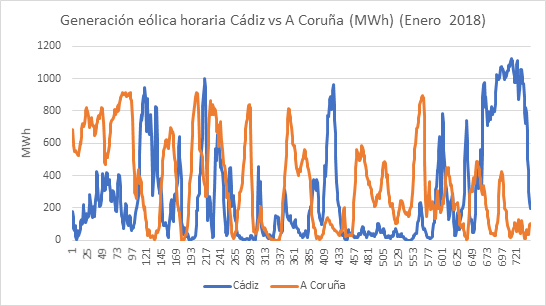
Source: REE and PREPA elaboration
Because of the importance that it already has in the Spanish mix and on which the PNIEC has been built, the fulfillment of the wind objectives in it are conditio sine qua non to meet the objectives of decarbonization and energy transition to 2030. In addition, At the EU level, taking into account that the objective of renewables is unique for the whole, the Spanish wind is also an indispensable factor in meeting the EU objectives for 2020 and 2030.
In order for the EU’s single electricity market to be economically efficient, renewable resources in southern Europe (especially in the Iberian Peninsula where they are abundant and varied) must be used to meet European electricity demand.
